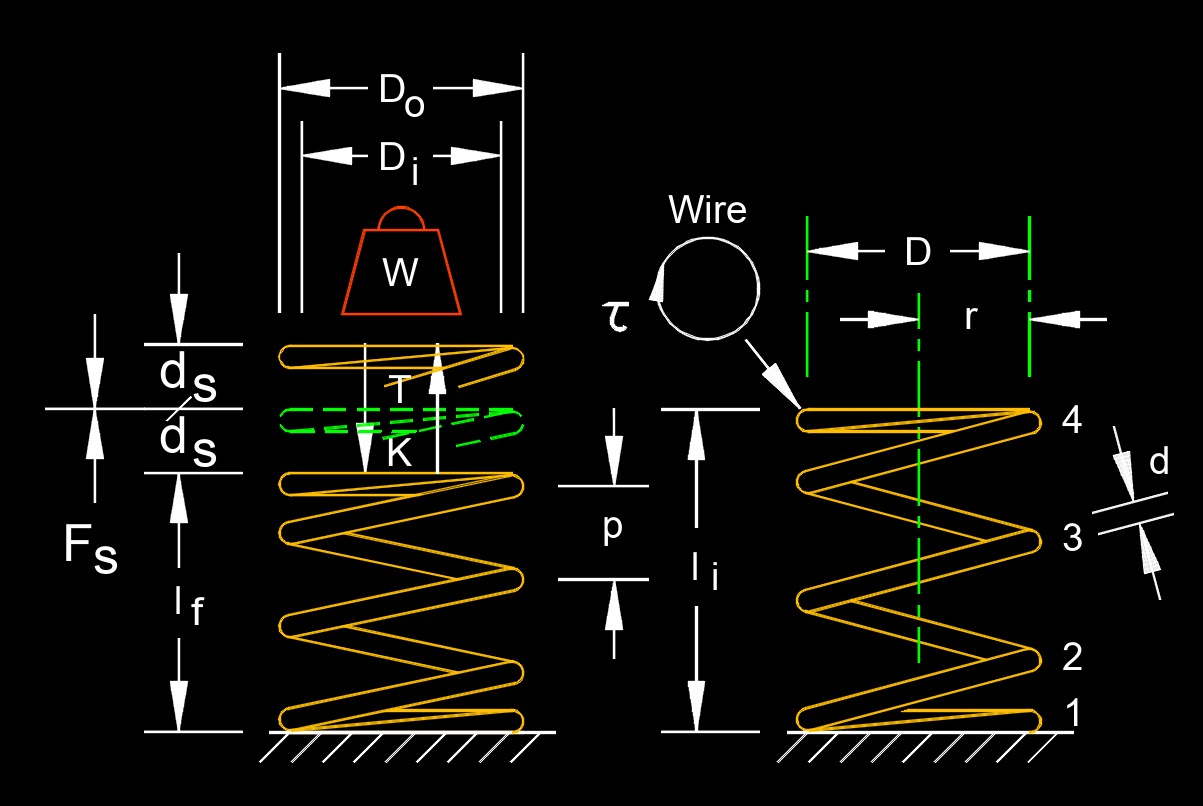Spring Energy
Spring Energy Formula |
||
|
\( E_s \;=\; \frac{1}{2} \cdot k_s \cdot d_s^2 \) (Spring Energy) \( k_s \;=\; \dfrac{ 2 \cdot E_s }{ d_s^2 } \) \( d_s \;=\; \sqrt{ \dfrac{ 2 \cdot E_s }{ k_s } } \) |
||
| Symbol | English | Metric |
| \( E_s \) = Spring Energy | \(lbf-ft\) | \(J\) |
| \( k_s \) = Spring Constant | \(lbf - ft\) | \(N - m\) |
| \( d_s \) = Spring Displacement | \(in\) | \(m\) |
 Spring energy, abbreviated as \(E_s\), also called spring retained energy, is a measure of the potential energy stored in elastic materials as the result of their stretching or compressing. Because of the conservation of energy, the potential energy in a spring is equal to the work required to bring it to that state. Spring energy is based on two variables, the spring constant and the displacement of the spring. The spring constant is a material property. The displacement is the distance the spring is compressed or stretched.
Spring energy, abbreviated as \(E_s\), also called spring retained energy, is a measure of the potential energy stored in elastic materials as the result of their stretching or compressing. Because of the conservation of energy, the potential energy in a spring is equal to the work required to bring it to that state. Spring energy is based on two variables, the spring constant and the displacement of the spring. The spring constant is a material property. The displacement is the distance the spring is compressed or stretched.
Spring Energy Formula |
||
|
\( E_s \;=\; \dfrac{ P \cdot d_s }{ 2 }\) (Spring Energy) \( P \;=\; \dfrac{ 2 \cdot E_s }{ d_s }\) \( d_s \;=\; \dfrac{ 2 \cdot E_s }{ P }\) |
||
| Symbol | English | Metric |
| \( E_s \) = Spring Energy | \(lbf-ft\) | \(J\) |
| \( P \) = Spring Load | \(lbf\) | \(kg\) |
| \( d_s \) = Spring Displacement | \(in\) | \(m\) |
Spring Energy Formula |
||
|
\( E_s \;=\; \dfrac{ ( P + T_i ) \cdot d_s }{ 2 }\) (Spring Energy) \( P \;=\; \dfrac{ 2 \cdot E_s }{ d_s } - T_i \) \( T_i \;=\; \dfrac{ 2 \cdot E_s }{ d_s } - P \) \( d_s \;=\; \dfrac{ 2 \cdot E_s }{ P + T_i } \) |
||
| Symbol | English | Metric |
| \( E_s \) = Spring Energy | \(lbf-ft\) | \(J\) |
| \( P \) = Spring Load | \(lbf\) | \(kg\) |
| \( T_i \) = Initial Spring Tension | \(lbf\) | \(N\) |
| \( d_s \) = Spring Displacement | \(in\) | \(m\) |

